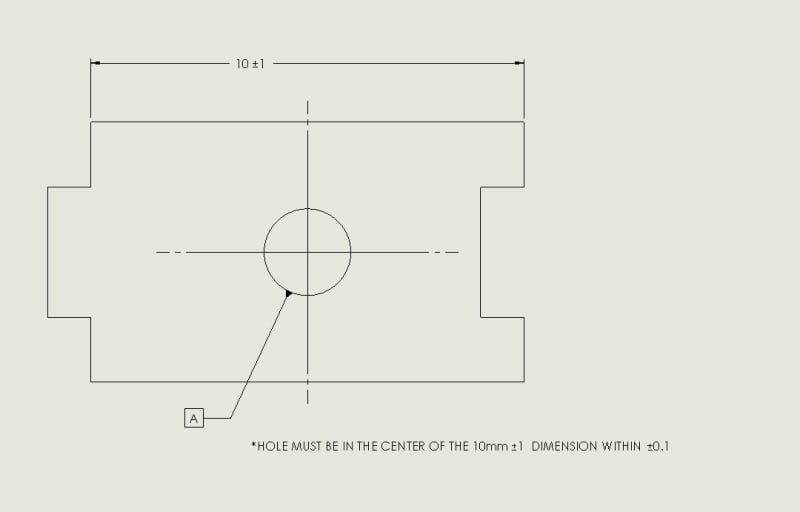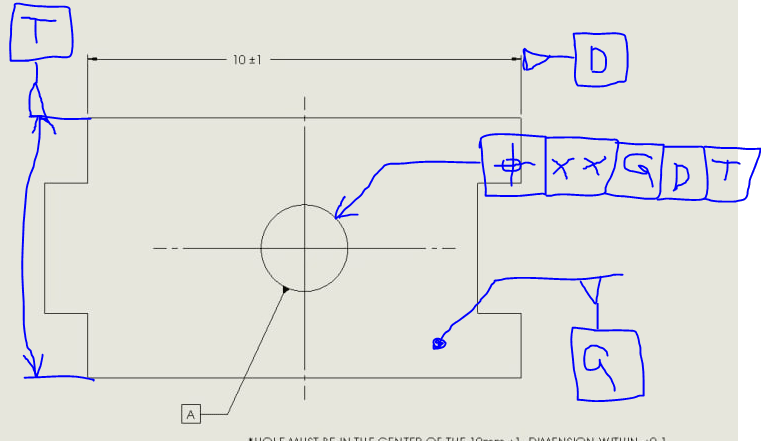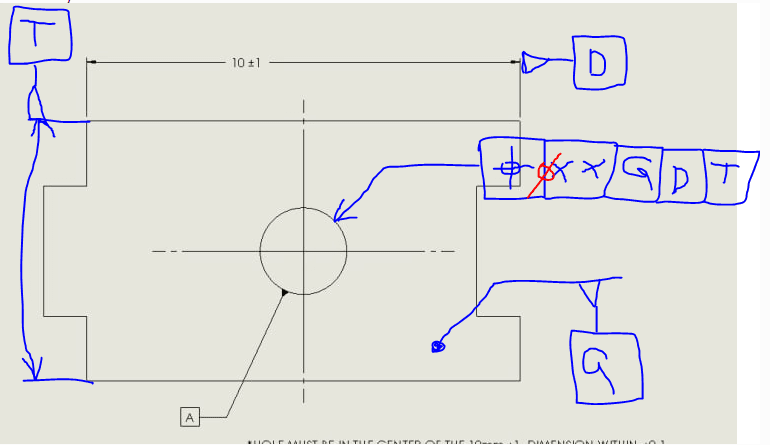I have an issue of figuring out what the best way to dimension this type of drawing would be.

If I have a hole in a middle of a rectangle, which I don't really care much about it's total width (say 10+-1), but I do want the hole to be in the center of the that rectangle regardless of how big or small it is within a tolerance of +-0.1.
How do I go about giving dimensions so that the hole is still centered regardless of the rectangle width?

If I have a hole in a middle of a rectangle, which I don't really care much about it's total width (say 10+-1), but I do want the hole to be in the center of the that rectangle regardless of how big or small it is within a tolerance of +-0.1.
How do I go about giving dimensions so that the hole is still centered regardless of the rectangle width?


![[lol] [lol] [lol]](/data/assets/smilies/lol.gif)

![[smile] [smile] [smile]](/data/assets/smilies/smile.gif)